Short skis are back in 2026, and they’re shaking up the slopes in a big way. Brands like Snowfeet have modernized these compact skis, making them portable, easy to learn on, and versatile for all kinds of terrain - from resorts to backyards. With prices starting at $250, they’re budget-friendly and pair with regular winter boots, cutting out the hassle of traditional ski gear. Whether you’re a beginner or a seasoned skier, short skis offer a fun, hassle-free way to enjoy winter sports.
Here’s why they’re gaining traction:
- Portable: Small enough to fit in a backpack.
- Easy to Use: Quicker learning curve, no special boots required.
- Affordable: Cost starts far below traditional ski setups.
- Versatile: Handle slopes, trails, and even urban snow.
Short skis aren’t just a quirky throwback - they’re proving they can perform. Models like Snowfeet’s 99 cm skiblades offer control at high speeds, while the 65 cm versions are perfect for tricks and tight turns. Forget the old myths: these skis are stable, fast, and built for all skill levels. Whether you’re hitting the mountains or your local park, short skis are making winter sports simpler and more fun.
Snowboarder tries Snowfeet* | Which Snowfeet* Short Ski is the Best? | Snowblades 44, 65, 99 Review
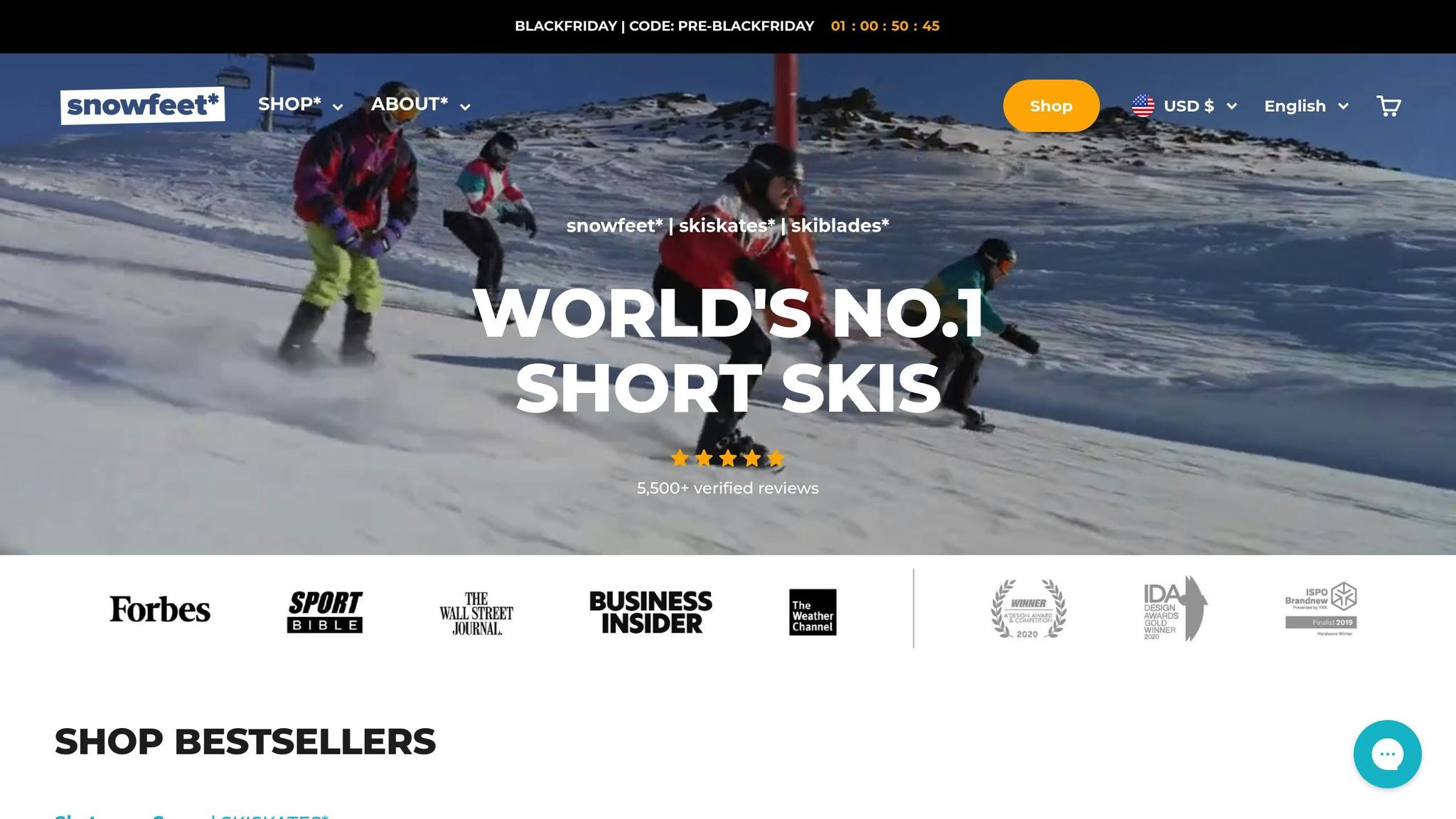
From Bigfoot to Skiblades: How Short Skis Changed
Short skis have come a long way from their quirky beginnings, transforming into serious tools for winter sports enthusiasts. What started as a playful experiment has evolved into equipment that challenges traditional ideas about skiing.
The Bigfoot Era: How It Started
The early days of short skis, often called "Bigfoot skis", offered a fresh take on skiing. Their shorter length made turning easier and introduced a unique way to enjoy the slopes. However, the ski industry wasn’t immediately sold on the idea. Ski schools and rental shops were hesitant, and seasoned skiers stuck to their trusted long skis, which were seen as more prestigious and versatile. Early short skis also struggled to perform well in varied snow conditions, limiting their appeal.
Modern Updates: Snowfeet* Skiblades
Fast forward to today, and companies like Snowfeet* have given short skis a serious upgrade. By combining the fun of the original concept with cutting-edge engineering, they’ve addressed the flaws of those early designs.
Snowfeet* Mini Ski Skates, for example, are just 38 cm (15 inches) long, making them incredibly portable - you can even toss them in a backpack. Perfect for everything from city adventures to snowy trails. For those looking for more performance, the Skiblades come in 65 cm (25.6 inches) and 99 cm (39 inches) sizes. The 65 cm version is great for groomed slopes and terrain parks, while the 99 cm model offers the stability and control that experienced skiers need, even at higher speeds.
One of the standout features of Snowfeet* products is their construction. They’re built with advanced materials and equipped with adjustable bindings that fit everything from standard winter shoes to professional ski boots. This flexibility eliminates the compatibility problems that plagued earlier short skis.
Perhaps the biggest leap forward is how versatile these skis have become. Whether you’re carving down groomed runs, floating through powder, trekking along hiking trails, or even skiing in urban settings, Snowfeet* has designed short skis that can handle it all. They’re now a serious competitor to traditional long skis from brands like Völkl and Head.
Clearing Up Myths About Short Skis
Short skis have been surrounded by myths for years, but Snowfeet* is proving many of them wrong.
One common misconception is that longer skis are always more stable. In reality, factors like ski width, edge design, and the skier’s technique matter far more than length. For instance, the 99 cm Snowfeet* model delivers impressive stability while still being more maneuverable than traditional long skis.
Another myth is that short skis can’t handle speed. This might have been true for older designs, but modern Snowfeet* skis use high-performance materials and advanced construction techniques, allowing skiers to confidently hit high speeds without sacrificing control.
There’s also a belief that short skis are just for beginners. While it’s true they’re easier to learn on, they’re far from limited to novice use. Advanced skiers love them for tight tree runs, tricks in terrain parks, and exploring backcountry areas where traditional skis can be a hassle.
Finally, the idea that short skis look unprofessional is quickly fading. These days, you’ll see Snowfeet* users carving down expert runs and pulling off impressive maneuvers. Their sleek designs and high-quality construction have earned respect on the slopes, shifting the perception from "toy" to "serious gear." It’s no wonder Snowfeet* is leading the charge in redefining what winter sports equipment can be.
Why Snowfeet* Skiblades Lead the Trend
While traditional ski and snowboard companies stick to heavy, bulky gear, Snowfeet* has shaken things up with a fresh take on winter sports. Their Skiblades aren’t just following trends - they’re setting them. Let’s dive into how Snowfeet* stands out in portability, versatility, playfulness, and design.
Easy to Carry and Store
One of the standout perks of Snowfeet* Skiblades is how portable they are. Traditional skis can be a pain to haul around - long, heavy, and awkward to manage, especially in crowded spots like Vail or Park City. Snowfeet* changes the game with compact options: Mini Ski Skates are just 15 inches long and weigh under 4 pounds, while their 65 cm Skiblades measure about 25.6 inches. Even the larger 99 cm model, at 39 inches, is far easier to handle than standard skis or snowboards.
"Another major perk is that short skis are lightweight and easy to carry. If you've ever struggled with hauling heavy, bulky skis around the mountain, you'll appreciate how easy it is to slip a pair of short skis into a backpack and hit the trail." – Snowfeet Team
This compact design means no more wrestling with ski racks or feeling drained before you even hit the slopes. For skiers in the U.S. who love convenience and spur-of-the-moment trips, Snowfeet* Skiblades are a perfect fit.
Excels in Every Snow Condition
Unlike traditional gear, which often works best in specific conditions, Snowfeet* Skiblades are built for versatility. Their universal binding system fits winter boots, snowboard boots, or ski boots, making it easy to switch from groomed runs to hiking trails without swapping equipment.
Whether you’re cruising a terrain park, gliding down smooth slopes, or tackling fresh powder, Snowfeet* has a model for you. This flexibility means you can embrace all kinds of snow conditions with just one pair of skiblades.
More Fun and Playful
Snowfeet* brings the fun back to skiing. For beginners, the smaller size means less intimidation and a quicker learning curve - building confidence faster. For seasoned skiers, the maneuverability is a game-changer. Tight tree runs, spins, jumps - you name it, these skiblades make it easier to turn every run into an adventure.
High Quality and Design
Snowfeet* delivers top-notch performance without the hefty price tag of traditional ski brands. For example, a pair of 65 cm Skiblades starts at $635, including bindings. Made with advanced materials and precision engineering, these skiblades are built to handle everything from icy East Coast slopes to the powdery Rockies.
But it’s not just about performance - Snowfeet* nails the style game, too. With sleek, modern designs and a variety of color options, their skiblades look as good as they perform. Whether you’re shredding down a slope or snapping photos for Instagram, they let you show off your personal flair.
"When you want to make your skiing effortless, light and unrestricting equipment is the key. Short skis will give you enough freedom to enjoy your ride without dragging your heavy skis around." – Snowfeet Team
sbb-itb-17ade95
How to Pick and Use Your Snowfeet* Skiblades
Choosing the right Snowfeet* Skiblades doesn't have to be complicated. With their straightforward sizing system and universal bindings, these skiblades take the hassle out of ski equipment selection.
Picking the Right Size
Snowfeet* Skiblades come in three sizes, each designed for different skiing styles and skill levels:
- 65 cm Skiblades (25.6 inches): These are great for beginners or anyone who loves maximum maneuverability. Perfect for terrain parks, tight tree runs, or learning the basics. At $635, they’re a solid choice for those just starting out.
- 99 cm Skiblades (39 inches): A versatile option for intermediate to advanced skiers, offering a balance of control and stability. Whether you're carving groomed runs or heading off the beaten path, this model handles it all. Priced at $675, they’re ideal for all-around performance.
- 120 cm Short Skis (47.2 inches): If you’re after a more traditional skiing feel with added stability and speed, these are for you. Designed for advanced skiers tackling steep slopes or high-speed runs, they’re available for $775.
When picking your size, focus on your boot size and skiing style rather than your height - Snowfeet* simplifies sizing compared to traditional skis. Thanks to their universal bindings, you can use them with winter boots, snowboard boots, or ski boots, so there’s no need to buy extra gear. Once you’ve chosen the right size, setup is quick and easy.
Getting Started: Setup and Basic Moves
Once you’ve got your Snowfeet* Skiblades, setting them up is a breeze. The universal bindings adjust to fit most boot sizes without any tools. Just step in, adjust the heel piece to match your boot length, and tighten the straps.
Your first time on Snowfeet* will feel different from traditional skis or snowboards. Start on gentle slopes to get used to the shorter length, which allows for quick, responsive edge-to-edge transitions. Keep your knees slightly bent, your weight centered, and practice shifting your weight from one ski to the other to make turns. Most beginners can confidently link turns within a day, thanks to the shorter learning curve.
Care Tips for Long-Lasting Use
A little care goes a long way in keeping your Snowfeet* Skiblades in top condition. Here are some tips to ensure they last:
- Wax them after every 10–15 days of use to maintain a smooth glide.
- Wipe down the bases and bindings after each session to prevent ice buildup.
- Store them in a dry place away from direct sunlight.
Also, check the binding straps regularly for wear. If they need replacing, new straps cost just $6, making repairs simple and affordable. With this easy maintenance routine, your Snowfeet* Skiblades will stay in great shape for many seasons to come.
Snowfeet* vs. Regular Skis and Snowboards: A Clear Winner
Snowfeet* Skiblades bring a fresh take to winter sports, offering convenience and flexibility that traditional skis and snowboards just can’t match. While big names like Rossignol, K2, and Burton have long dominated with their longer, more specialized equipment, Snowfeet* proves that sometimes less is more. Their compact design packs a punch when it comes to performance.
Comparison Chart: Snowfeet* vs. Regular Gear
| Feature | Snowfeet* Skiblades | Traditional Skis | Snowboards |
|---|---|---|---|
| Length | 25.6" – 47.2" (65cm – 120cm) | Typically around 63" – 75" | Typically around 59" – 67" |
| Portability | Compact; fits in a backpack | Requires a bulky ski bag or rack | Needs a board bag or specialized storage |
| Boot Compatibility | Works with winter, ski, and snowboard boots | Generally designed for ski boots only | Designed for snowboard boots only |
| Ease of Use | Intuitive and beginner-friendly | Steeper learning curve | Requires more balance and technique |
| Storage | Fits on a closet shelf | Often needs garage or large storage | Typically stored in larger spaces (garage/basement) |
| Price Range | $250 – $775 (across the Snowfeet* lineup) | Higher price range | Competitively priced |
| Versatility | Great for slopes, parks, backyards, and trails | Optimized for slopes | Optimized for slopes |
Traditional skis, measuring 63–75 inches, can be a hassle to store and transport. Snowfeet*, on the other hand, are compact enough to slip into a backpack, making them perfect for people who live for spontaneity and convenience. It’s a game-changer for anyone with a busy lifestyle.
Why Americans Are Switching
Snowfeet* has struck a chord with Americans looking for a fun, hassle-free way to enjoy winter sports. Unlike snowboards, which require practice to master balance and technique, Snowfeet* offer a natural, walking-like motion that’s easy to pick up. This makes them ideal for beginners, young adventurers, and city dwellers who want to hit the snow without the steep learning curve.
Whether you're carving turns on a slope or zipping around a snowy park, Snowfeet* make winter sports more accessible and enjoyable. Their portability and versatility mean you can take them anywhere - from mountain trails to your local park - making them a perfect fit for urban explorers and thrill-seekers alike.
Changing the Future of Winter Sports
Snowfeet* isn’t just a product; it’s part of a bigger movement. Founders Zbynek and Michael are reimagining what winter sports can be with their concept of skiskating - a fusion of skiing and skating that’s as exciting as it sounds. They’ve even got their sights set on Olympic recognition someday.
For years, people believed that longer skis meant better stability. Snowfeet* flips that idea on its head, proving that shorter, more maneuverable equipment can offer a whole new level of fun and control. It’s not just about following tradition anymore - it’s about redefining how we experience the snow.
Conclusion: The Best Return of 2026
From Bigfoot skis to Snowfeet* Skiblades, short skis are stealing the spotlight as 2026's must-try winter sports gear. What once seemed like a quirky concept has grown into a movement that's changing how Americans approach snow sports.
Snowfeet* has shown that smaller can be smarter, offering the performance of traditional skis with a level of convenience that’s hard to beat. While big names like Rossignol and Burton continue to refine their longer, specialized gear, Snowfeet* is blazing a new trail. Unlike traditional skis, which can be cumbersome and require extra storage, Snowfeet* products are compact enough to fit in a backpack and pair with regular winter boots. Whether you're hitting the slopes or exploring snowy city parks, this gear is perfect for spur-of-the-moment adventures. It’s a fresh take that’s redefining what’s possible in snow sports.
Thanks to founders Zbynek and Michael, the idea of skiskating - a blend of skiing and skating - has taken off. They’ve proved that shorter skis don’t sacrifice performance; instead, they bring a new kind of agility and fun to the table. Their forward-thinking approach challenges the old belief that longer gear is always better.
More and more Americans are ditching bulky, single-purpose equipment in favor of versatile, easy-to-use options. Snowfeet* has opened the door for beginners, city dwellers, and anyone looking to enjoy the snow without the hassle of traditional gear. The shift is undeniable.
2026 is the year short skis went from a quirky novelty to the future of winter sports. Whether you’re carving through fresh powder or gliding through a snowy park, Snowfeet* Skiblades deliver performance, convenience, and a whole lot of fun. This isn’t just a trend - it’s a revolution, and it’s only getting started.
FAQs
How do Snowfeet Skiblades stack up against traditional skis in performance and versatility?
Snowfeet Skiblades bring a whole new level of agility and control to the slopes. Their compact design makes sharp turns and quick maneuvers feel effortless, giving you a dynamic and exciting ride. Plus, because they’re smaller and lighter than traditional skis, you’ll feel less fatigue, which means more time carving down the mountain without wearing yourself out.
What’s cool about Snowfeet Skiblades is their versatility. Whether you’re sticking to groomed trails or venturing off-piste for some playful terrain, these skiblades can handle it all. And let’s not forget their lightweight, portable design - it’s super easy to carry them around and store them when you’re done. If you’re after a mix of fun, convenience, and performance, Snowfeet Skiblades might just be your new go-to for winter adventures.
How do I choose the right size of Snowfeet Skiblades for my skiing style and skill level?
Choosing the right size of Snowfeet Skiblades comes down to your skiing style and experience level. If you're into tricks, quick turns, or want a skating-like feel, go for shorter skiblades (about 25–33 inches). On the other hand, longer skiblades (35–47 inches) are your best bet if you’re after more stability for carving or tackling powder.
Width matters, too. Wider skiblades can offer extra stability, making them a great choice for beginners or anyone skiing on softer snow. And don’t forget about bindings. Non-release bindings are lightweight and straightforward, but if safety or a more traditional skiing vibe is your priority, release bindings or snowboard-style bindings might be a better fit.
No matter what you choose, Snowfeet Skiblades are all about making your time on the slopes more fun, portable, and versatile!
Are Snowfeet Skiblades good for all snow conditions, and how do they compare to traditional skis on different terrains?
Snowfeet Skiblades, especially the compact 65 cm model, are built to handle a mix of snow conditions with ease. Whether you're cruising groomed trails, gliding through light powder, or hitting the terrain park, their shorter length makes them super responsive and a blast to control. Perfect for anyone who loves a thrilling winter ride.
What really sets Snowfeet Skiblades apart from traditional skis is their portability and versatility. Long skis can be a pain to lug around and aren't always the easiest to maneuver. Snowfeet, on the other hand, are lightweight and a breeze to transport. They're ideal for quick getaways or those last-minute adventures. From carving smooth turns on packed snow to having fun on varied terrain, these skiblades combine convenience with a seriously fun experience.





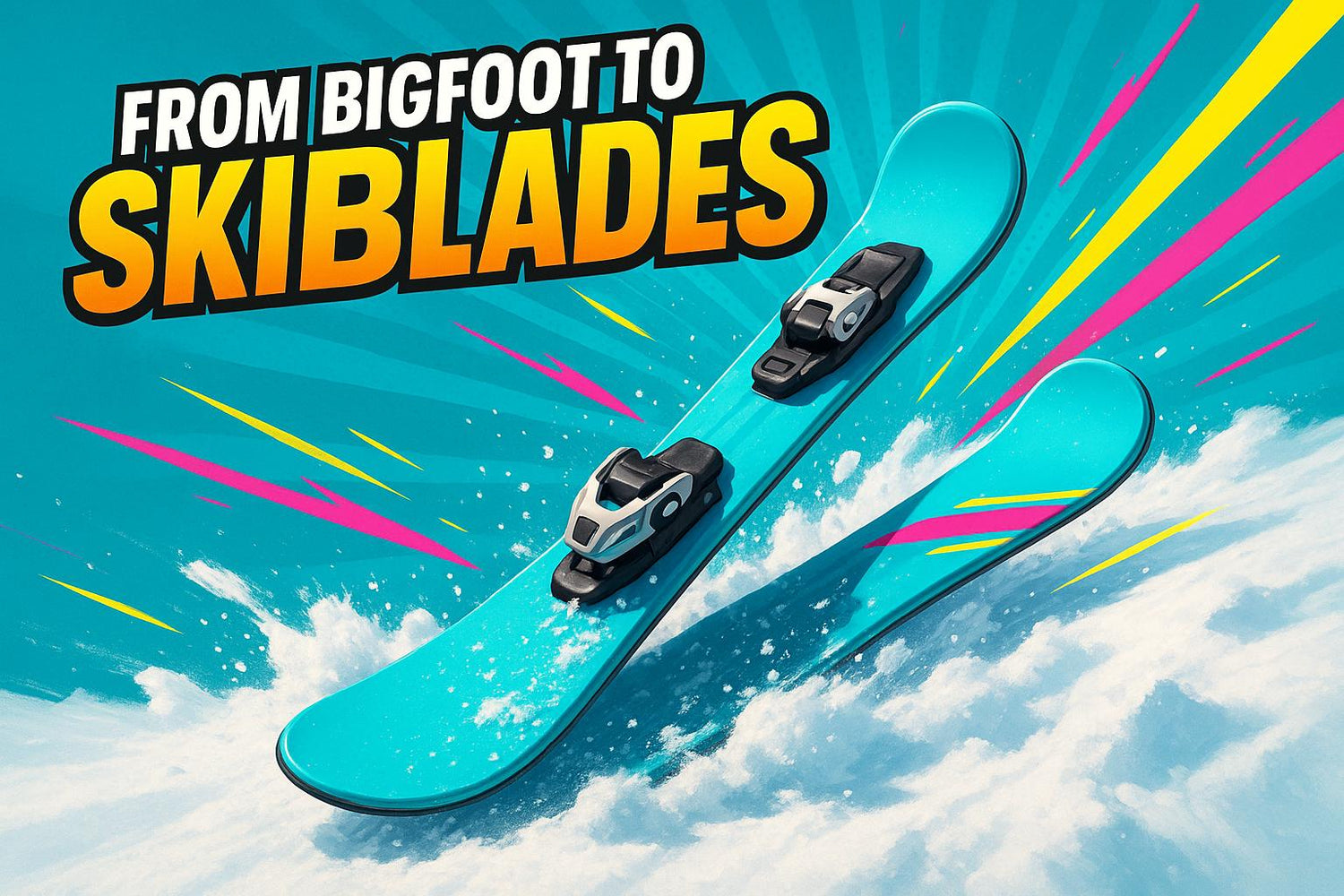
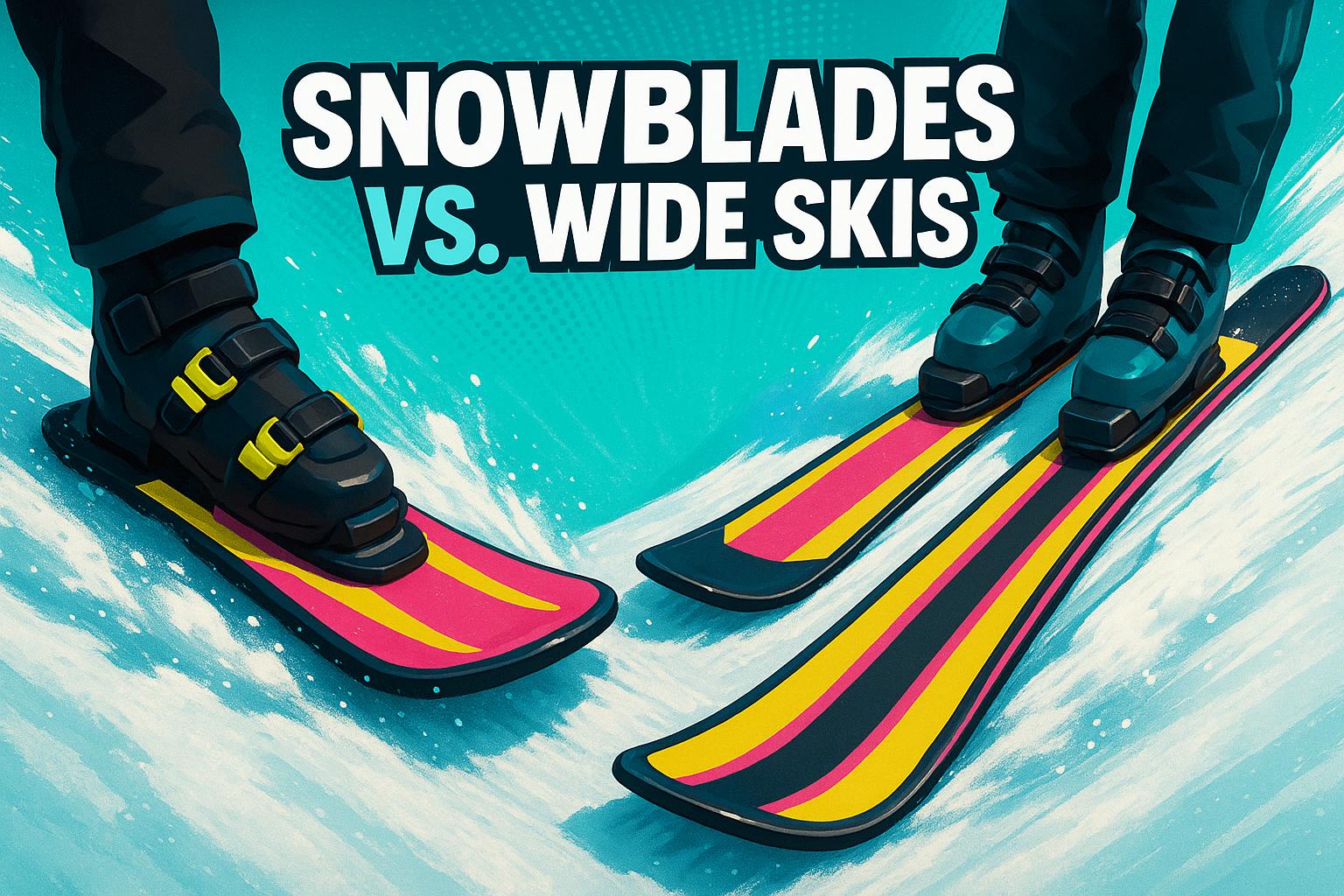




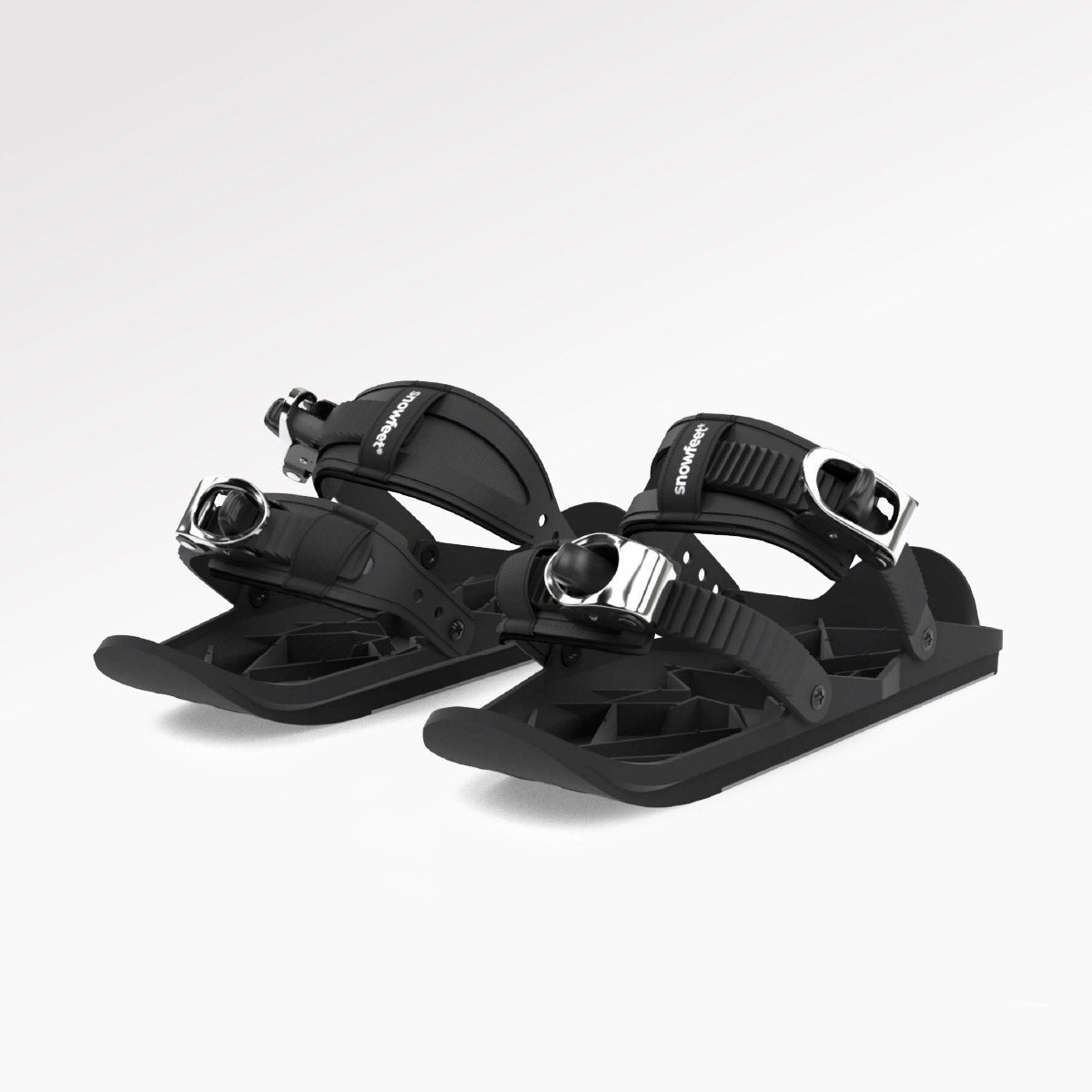
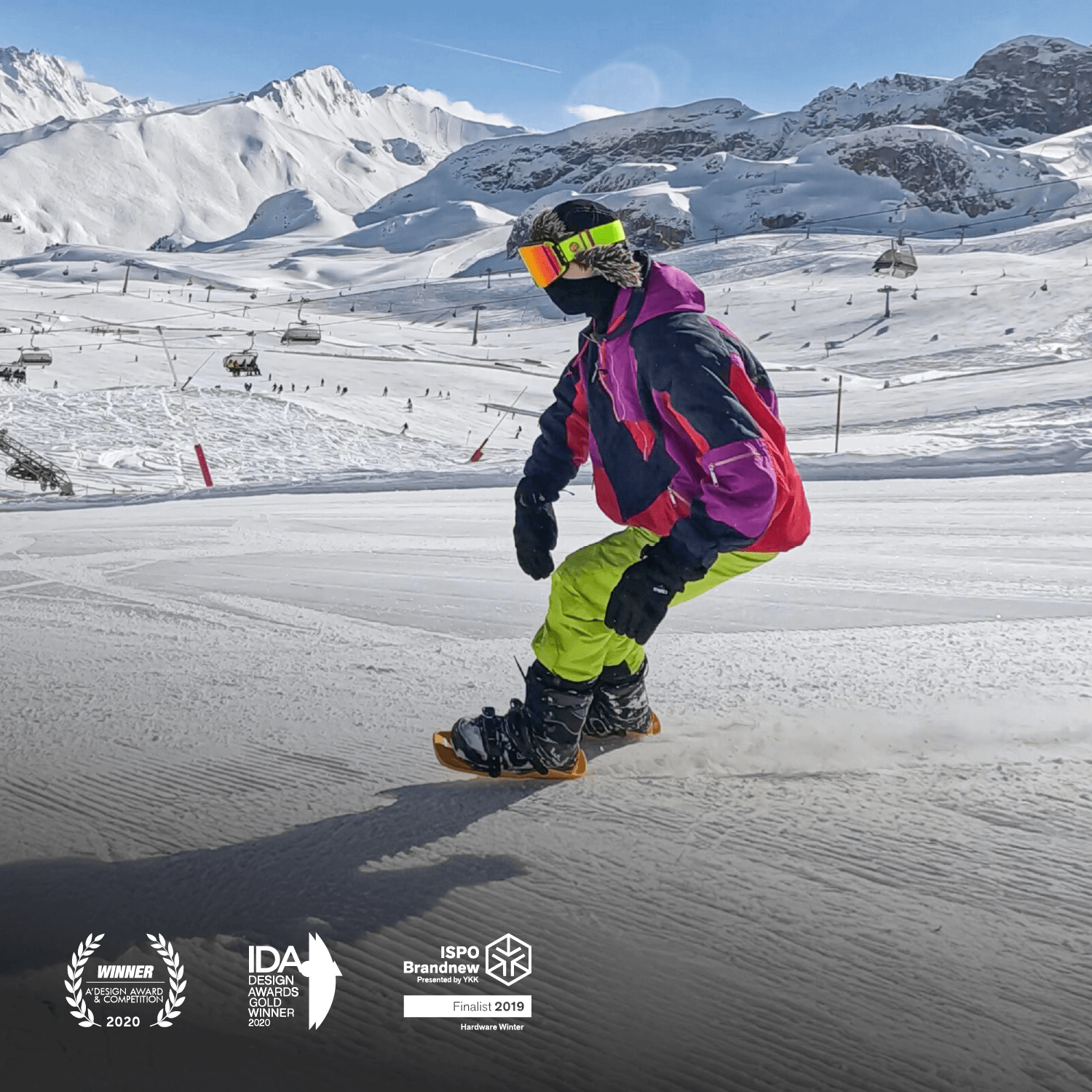


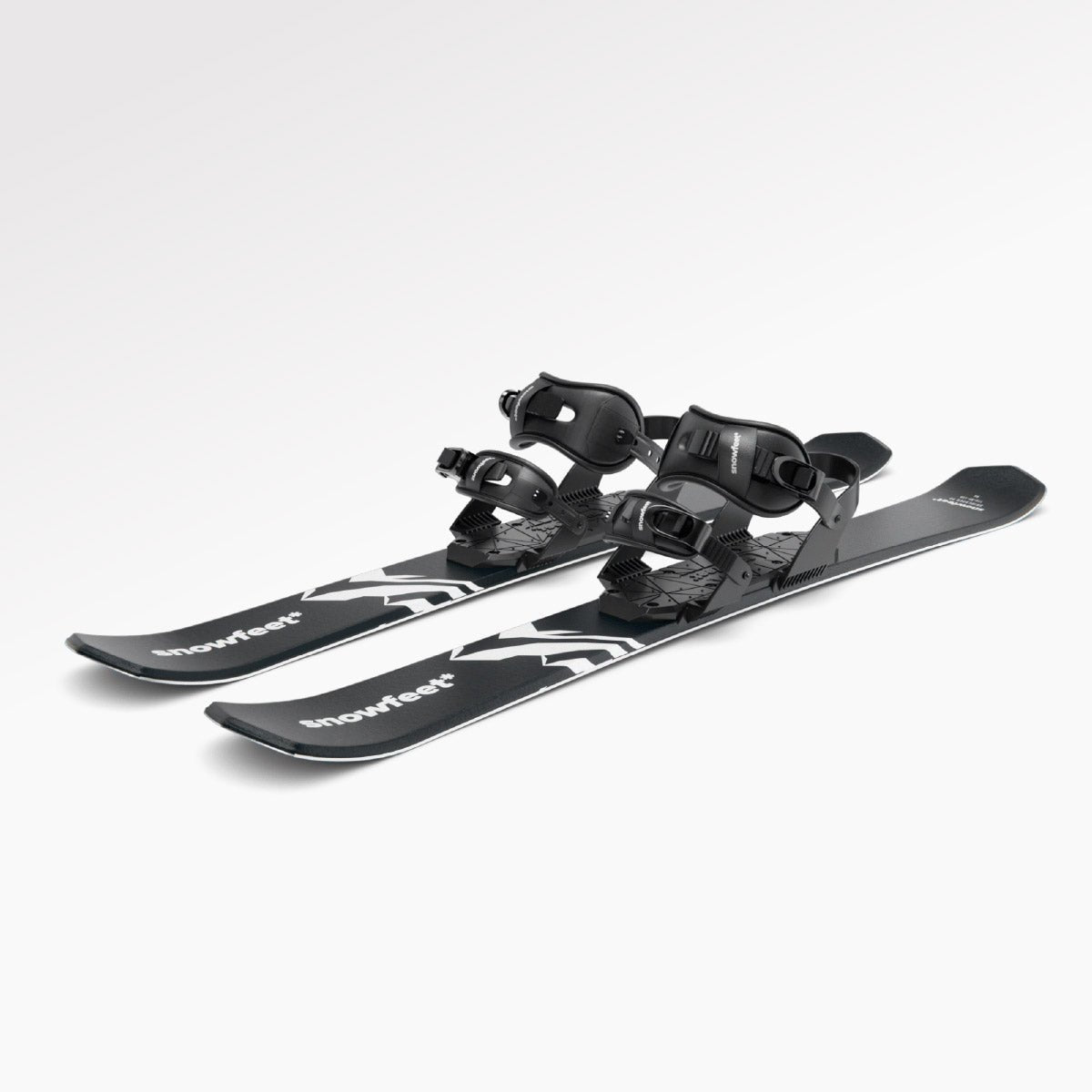

Laisser un commentaire
Ce site est protégé par hCaptcha, et la Politique de confidentialité et les Conditions de service de hCaptcha s’appliquent.